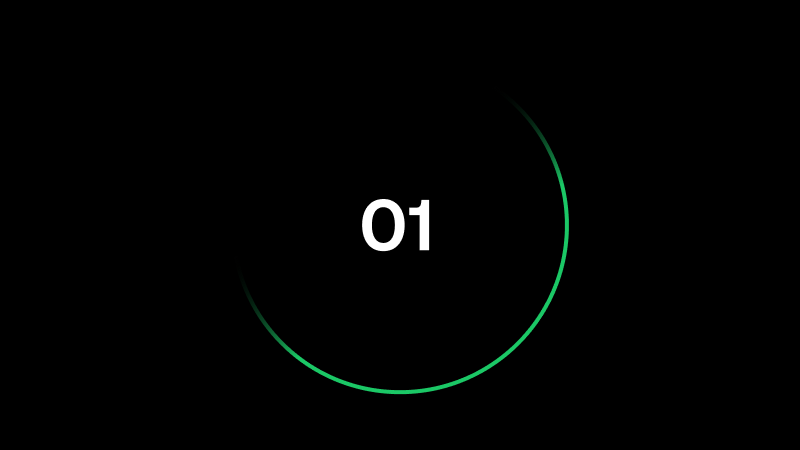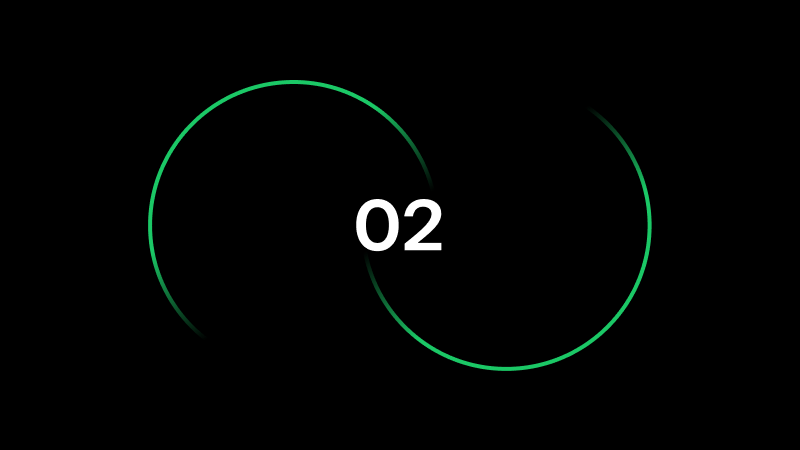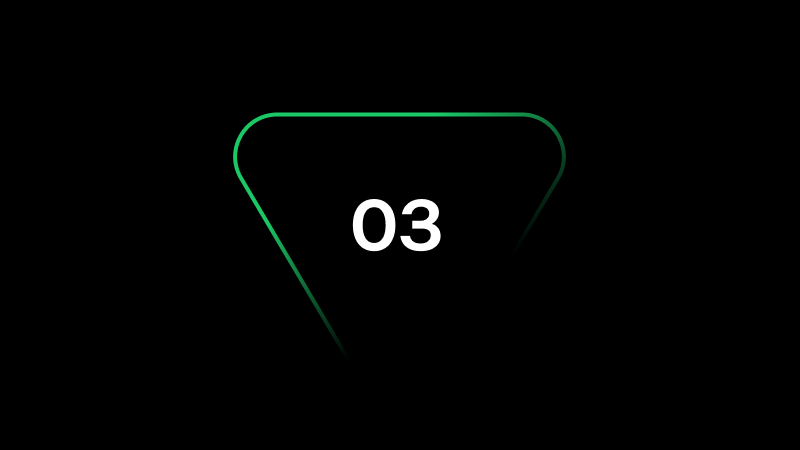06
P2P payment apps
The rise of digital ecosystems
The financial services industry is undergoing a rapid digital transformation, with finance apps emerging as key drivers of accessibility and efficiency. Nordic P2P payment apps, like MobilePay and Swish, have evolved into comprehensive financial ecosystems, while the Dutch Tikkie follows a different model, integrating with traditional banking apps. As real-time payments become standard in Scandinavian banking, innovation is critical for survival. Meanwhile, digital-first banks are redefining financial services to integrate them into lifestyle ecosystems, where banking is seamlessly embedded into daily digital experiences.
6.1
The digital transformation of finance: Banking in the app era
Once dominated by in-person interactions at physical bank branches, the sector now thrives in a digital-first world where apps have become the primary bridge between institutions, their services, and their customers. Since 2008, the number of bank branches operating from a physical location in the EU has fallen by nearly 100,000, cutting their presence almost in half. A change likely driven by the ongoing digitalization of the sector.
This shift has improved access to financial management while also boosting performance. Financial services—including payment, banking, and investment apps—consistently rank among the top-performing apps.
App Pulse score by category
Provided by framna
Provided by framna
Among financial apps, peer-to-peer (P2P) payment solutions stand out. In Denmark and Sweden, MobilePay and Swish dominate, achieving the highest App Pulse scores across all app categories. These apps are not just the top performers in finance–they rank among the best across all industries. The Netherlands, however, presents a different story. Here Tikkie is widely adopted and well-received, but it does not perform as well as its Nordic counterparts. This discrepancy raises an intriguing question. Why do these services, operating in similarly tech-savvy markets, perform so differently?
Success story
It began as a simple idea–to send money with just a phone number. Now it is one of the most trusted payment solutions in Sweden. Swish delivers on everyday convenience with a seamless interface, instant transactions, and bank-grade security. From online shopping to splitting bills, millions rely on Swish to move money in seconds. Its standout App Pulse score of 88 reflects a product that just works. It is fast, intuitive, and deeply embedded in daily life. It is proof that simple, purposeful design can drive widespread adoption and lasting impact.

6.2
The rise of P2P payment giants
MobilePay and Swish represent full-fledged ecosystems that facilitate seamless end-to-end payments. Users send and receive money directly within the platform, and rely entirely on the app for transactions. Without both parties–sender and receiver–using the app, the payment cannot happen. This model relies on network effects to thrive, requiring widespread adoption to stay viable and appealing. The more users join, the more essential the service becomes. However, if users leave, its value declines, making it a high-risk, high-reward model.
App Pulse score top finance apps
Broken down by gender
Provided by framna
Provided by framna
Despite this challenge, with over 90% of local users relying on them, MobilePay and Swish have become the most widely used payment facilitators in Sweden and Denmark. This strong network effect has fueled their evolution from simple P2P payment tools to comprehensive financial ecosystems, now widely accepted in retail, e-commerce, and for subscription services.
Top 10 most installed finance apps
Provided by framna
Provided by framna
In contrast, the Dutch alternative, Tikkie, follows a slightly different approach. Instead of making payments within the app, Tikkie acts as a payment request generator. Users can input an amount, split it among friends, and generate a payment link. The link is shared, usually via WhatsApp, so recipients can complete the payment through their banking apps. In MobilePay and Swish, both sender and receiver must be on the platform. Only the person requesting money needs to use Tikkie.
Swish and MobilePay allow users to both send and request money, while Tikkie is still primarily used for payment requests. In Tikkie, the transaction itself occurs outside the app, within the traditional banking infrastructure. Tikkie simplifies splitting costs, sharing payment details, and prefilling banking info, but the banking app handles the transfer itself.
Tikkie is less dependent on network effects, and can operate regardless of parties’ presence on the platform. Maybe this explains why the adoption rate in the Dutch population is comparatively low (50%). The multi-app payment process in Tikkie also results in a more fragmented user experience. As a result, key factors like "making life easier" and "ease of use" drive performance differences between MobilePay, Swish, and Tikkie. A seamless, all-in-one app enhances overall user experience which raises the question of whether the Dutch P2P payment market still has room for more players.
Driver performance comparison: Tikkie, MobilePay, Swish
Provided by framna
Provided by framna
The answer lies in a combination of social infrastructure, tradition, and the unique features of each digital product. When examining user experiences, Swish and MobilePay differ from Tikkie in key ways, largely influenced by their underlying infrastructure and level of cross-bank collaboration.
At their core, all three apps aim to make money transfers effortless, but their operational models define their competitive edge.
“Great app, but payment requests through bank apps work just as well, so I no longer use Tikkie.”
User comment about Tikkie
Why did MobilePay and Swish evolve into end-to-end payment systems, while Tikkie did not? This could be due to the way partnerships were structured and how they have evolved over time.
MobilePay and Swish have benefited from strong cross-bank collaboration, with a shared goal of developing a national payment solution. From the start, banks worked together to create a unified platform with a large user base and a seamless experience.
In contrast, the Dutch fintech landscape is more decentralized. Individual banking apps already play a dominant role in transactions, making banks the primary facilitators rather than a standalone P2P platform. Tikkie acts as a connector, enabling users to request and split payments while keeping banks central to transactions. Though less streamlined than MobilePay or Swish, the Dutch model serves a strategic purpose: ensuring banks remain at the heart of digital payments. By integrating P2P features, banks retain customer engagement and strengthen their app’s value, preventing users from migrating to third-party platforms.
6.3
Multiple paths but one future for digital payments
Success story
With a very high App Pulse score of 87, MobilePay stands out as a frictionless ecosystem deeply embedded in everyday life. It is more than just an app, it has become a national standard for digital payments in Denmark.

The differences between the Nordic and Dutch payment models raise a key question in digital finance: Should banks unite under a single platform, or should they compete by integrating P2P features into their own systems?
With the decline of physical branches and face-to-face interactions, traditional banks are rethinking how they maintain customer relationships and loyalty. By integrating P2P features directly into their apps, they ensure that customers continue to engage with their brand, rather than migrating to a third-party platform, which may strengthen their own apps’ value proposition, respectively.
The future of platforms like MobilePay and Swish is uncertain as real-time payments are becoming a standard feature among Scandinavian banks. In Sweden, the Riksbank’s new system enables real-time payments across all banks. As P2P transactions become more widely available it could reduce the need for Swish. However, it remains unclear whether Swedish banks will fully adopt this feature.
“The most useful app I know of.”
User comment about Swish
This potential threat may have compelled platforms like MobilePay and Swish to innovate beyond basic P2P transactions to stay competitive.
For example, Swish's "Scan & Swish" initiative allows users to scan and pay directly in stores, aiming to replace traditional checkout systems. Meanwhile, MobilePay’s merger with Vipps reflects a strategic move to expand across borders and strengthen its market position. By leveraging cross-border network effects, MobilePay aims to maintain relevance and reduce the risk of becoming a commodity service.
6.4
Digital-first banks: Transforming finance into a seamless lifestyle
The shift toward bank-led digital experiences has sparked a broader transformation in the financial industry. As mobile banking becomes the primary way customers interact with their banks, differentiation has become a key competitive factor. With the lines between financial institutions becoming less distinct, banks are now in an innovation race, striving to deliver the most seamless and feature-rich digital experiences.
Fintech companies like Klarna, Revolut, and Monzo have evolved from startups into fully licensed banks, reshaping the competitive landscape.
At the same time, digital-only banks are redefining what it means to be a financial institution. Unlike traditional banks, these fintech challengers are built for digital. Without the constraints of physical branches or outdated infrastructure, they can experiment freely with new revenue models, frictionless user experiences, and value-adding services that go beyond traditional banking.
Revolut, Klarna, and Monzo have each expanded beyond their original purpose to create broader financial ecosystems. Revolut started as a currency exchange service but now offers banking, budgeting tools, virtual credit cards, and even lifestyle services like travel insurance and eSIMs. Klarna evolved from a "buy now, pay later" solution into a full shopping and payment platform, integrating in-app shopping, price tracking, and rewards. Monzo, a digital-first bank, has become a comprehensive financial hub with features like budgeting, bill splitting, and subscription management. By blending financial services with adjacent industries, these apps keep users engaged while reshaping the way they interact with money..
“The app works as needed and makes it easy to create accounts for my children, invest in stocks, and trade cryptocurrency.”
User comment about Revolut
Digital-first banks understand that their competitive advantage lies not just in financial services, but in embedding them seamlessly into everyday life. To enhance retention and drive revenue, they introduce premium subscriptions with high-value “delighter features”—perks like purchase protection, access to exclusive digital services (e.g., Headspace, NordVPN, Wolt+), and enhanced rewards. By integrating financial tools with everyday digital consumption, these banks are redefining fintech as an essential part of a broader lifestyle ecosystem.
6.5
Conclusions & takeaways
While digital-first fintech challengers are driving innovation, traditional banks still hold key advantages: trust, regulatory expertise, and strong customer relationships.
The banking industry is at a turning point. On one side, fintech challengers are reshaping consumer expectations by transforming financial services into integrated lifestyle platforms. On the other, legacy banks face a critical choice: adapt, collaborate, or risk falling behind.
Banking is no longer just about money. The future lies in seamless integration, where financial tools blend effortlessly into everyday life. The next era of banking will be defined by next-gen digital experiences and capturing value beyond financial transactions.
Finance apps are driving digital transformation. As physical bank branches decline, finance apps have become the primary gateway to financial services, consistently ranking among the top-performing digital products.
Nordic P2P payment apps thrive on network effects. Platforms like MobilePay and Swish have grown into full-fledged ecosystems, leveraging cross-bank collaboration and widespread adoption to remain indispensable in everyday transactions.
Tikkie takes a different approach. Unlike its Nordic counterparts, Tikkie operates as a payment request generator rather than a standalone platform. This reduces its dependence on network effects but results in a more fragmented user experience.
The future of Nordic P2P platforms depends on innovation. With real-time payments becoming standard among Scandinavian banks, services like MobilePay and Swish must evolve beyond P2P transactions to maintain relevance.
Banking is becoming a lifestyle experience. Digital-first banks like Klarna, Monzo, and Revolut are integrating financial tools with adjacent services, positioning fintech as an essential part of daily life beyond traditional banking.








